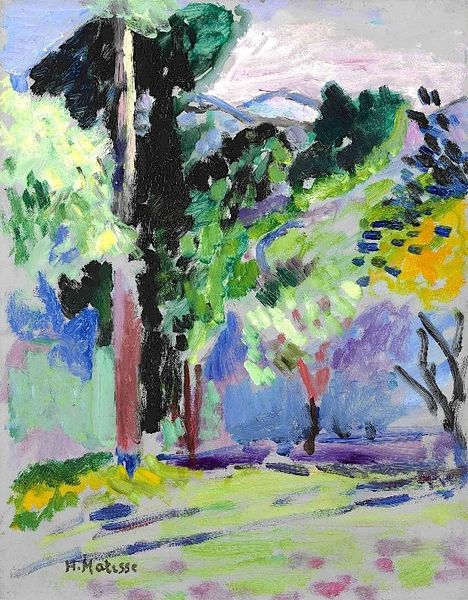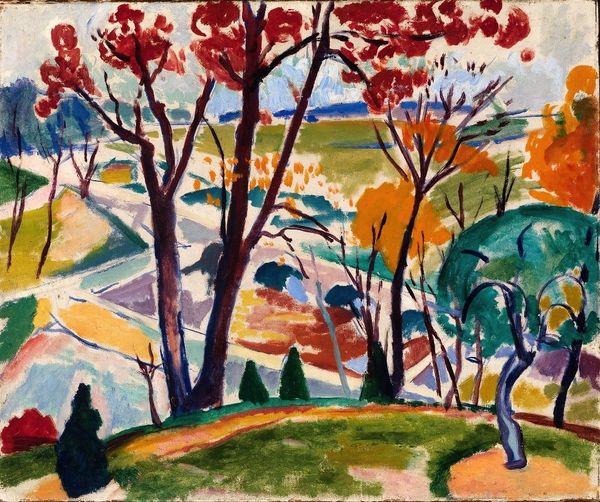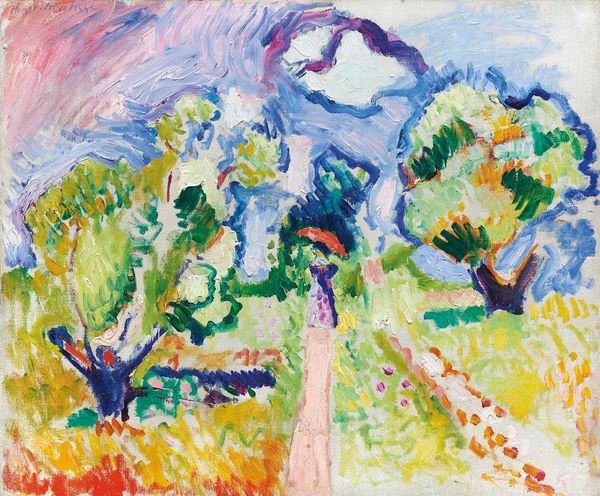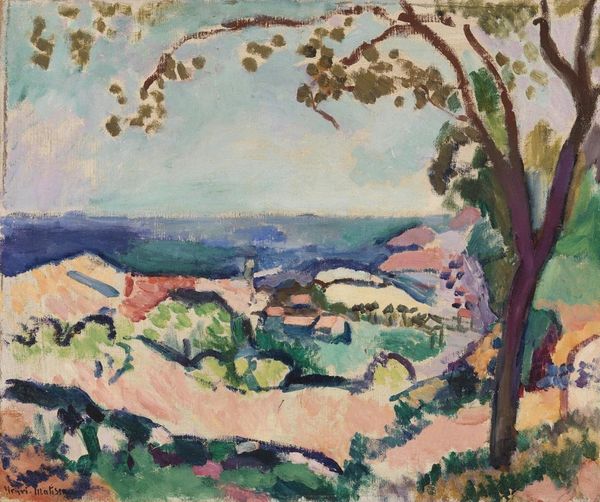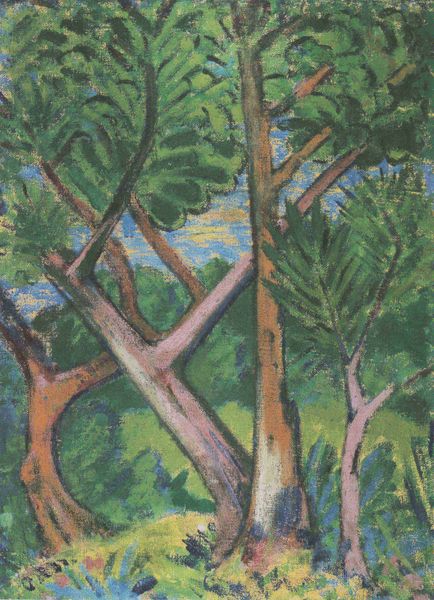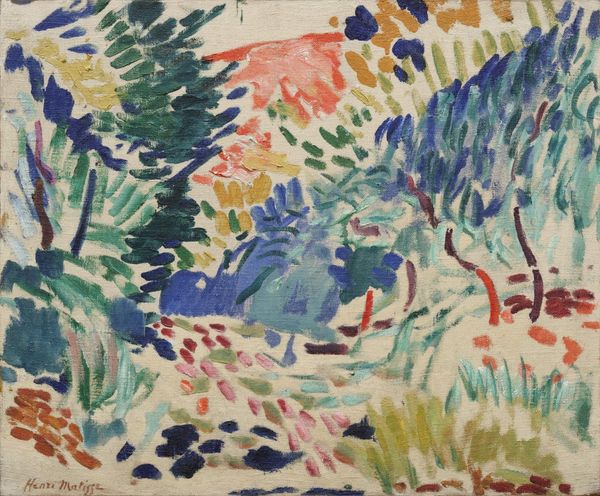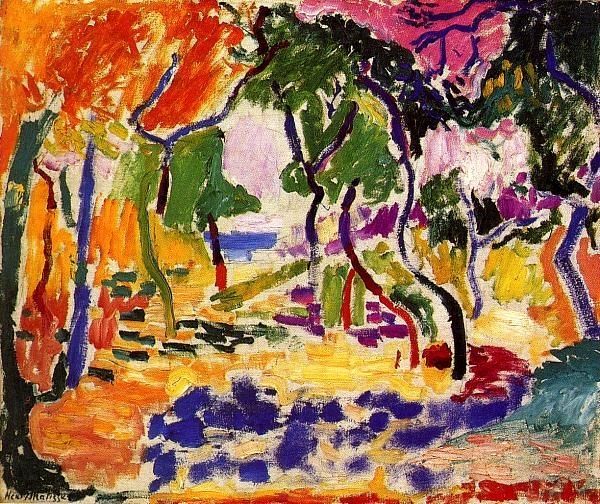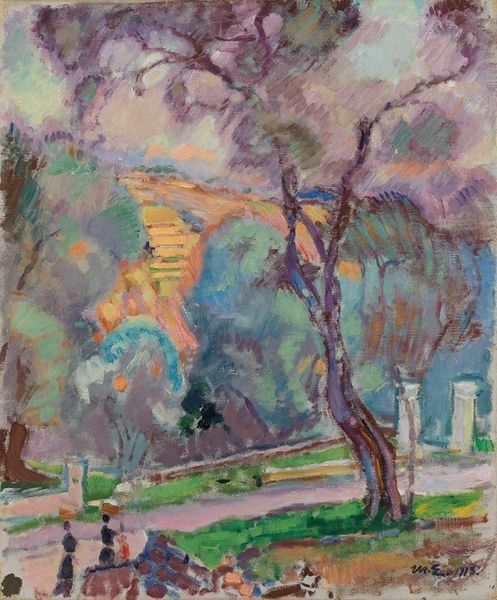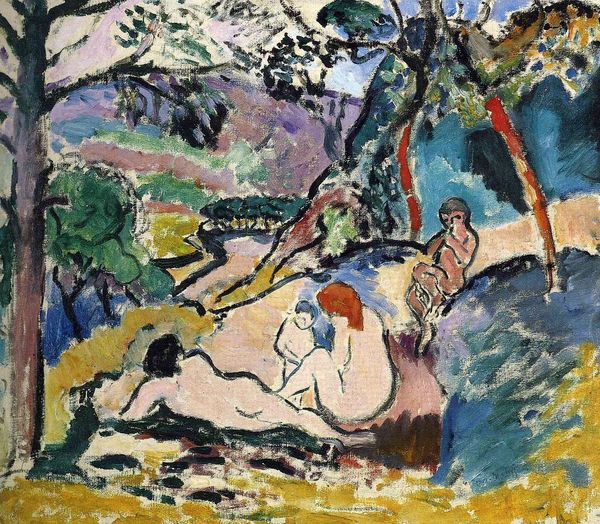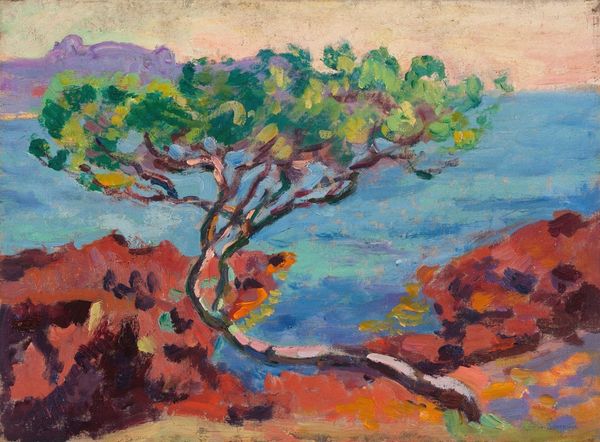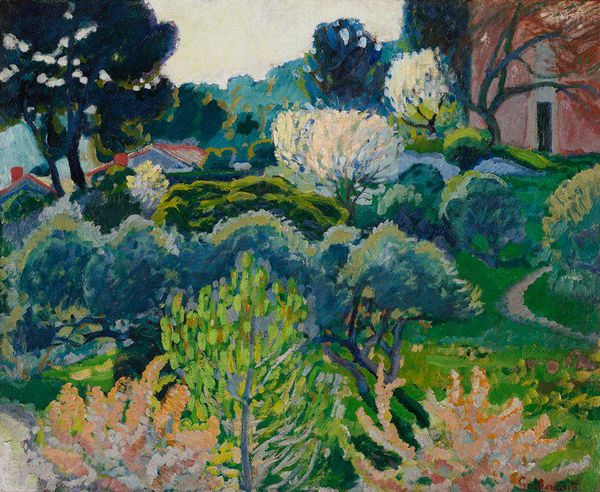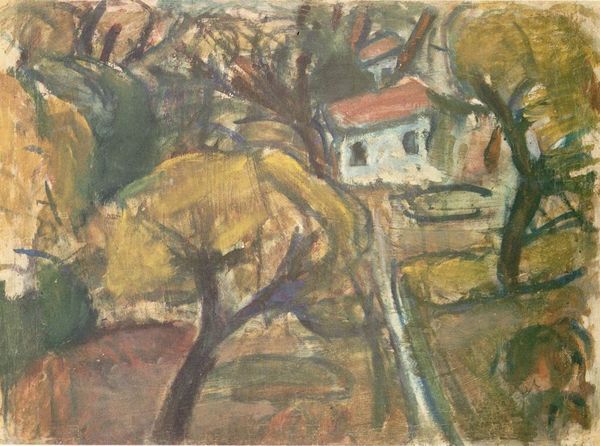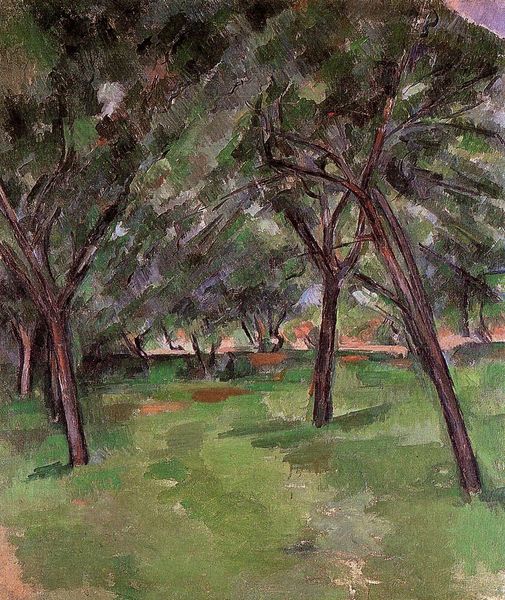
Copyright: Public domain US
Editor: Here we have Henri Matisse’s “Olive Trees at Collioure,” painted in 1906 using oil on canvas. What strikes me is the vibrant, almost unrealistic color palette – the pinks and lavenders used for the ground are so unexpected. How do you interpret this work? Curator: It’s vital to understand the social context that fueled Fauvism. Artists like Matisse felt liberated from traditional representational constraints. Painting "en plein air" in Collioure, he was grappling with capturing subjective experience through pure color and simplified form. It was a radical departure from academic painting. How might audiences at the time have reacted, considering their expectations? Editor: I imagine they were pretty shocked! It seems like he’s using color to express a feeling rather than depict reality. Curator: Precisely. And that’s where the “wild beast” moniker comes in, referring to the animalistic urge to push boundaries. The art world was changing. Salons had the power to elevate artists, or ridicule them; and critics could influence public perception immensely. Looking at "Olive Trees", does the perceived 'unfinished' quality, and the boldness of colour, challenge conventional expectations of landscape painting? Editor: Yes, it definitely challenges it. I can see how that boldness was groundbreaking then and set the stage for so many later movements. Curator: This piece reflects that tension of societal acceptance against the urge to be visually avant-garde. Matisse skillfully navigates that line, achieving something really sensational. It is truly impressive that he had this sort of bravery in color to explore themes in such an unusual manner. Editor: I never considered it that way, but your point about the societal pressure really highlights how rebellious this piece truly was. Thanks!
Comments
No comments
Be the first to comment and join the conversation on the ultimate creative platform.
